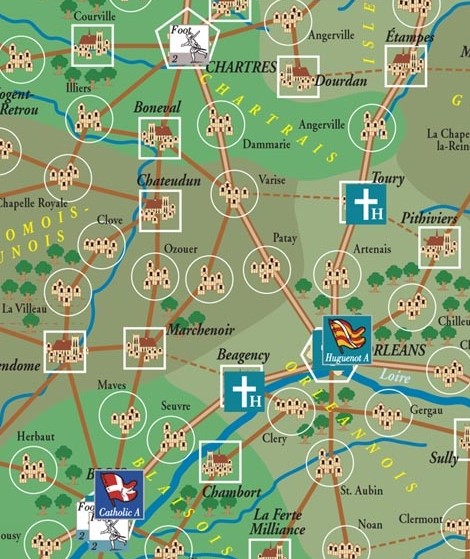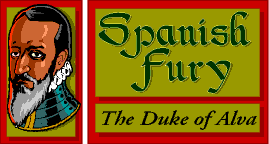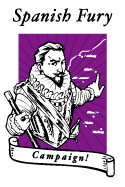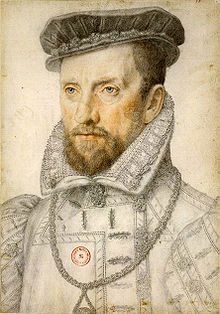I have commanded infantry for a long time, and I know them; they often fulfill the proverb that says 'from a young hermit comes an old devil'.
- Admiral Gaspard de Coligny
Welcome friend, to the page that asks, "Rome or Geneva, or Wittenburg"?
---------------------------
Contact us
The Perfect Captain
---------------------------
A complete system of warfare for 16th Century Europe Including Large & Small scale land warfare modules, one for Naval warfare, a Campaign, a Siege Game, and piracy in the Caribbean!
Spanish Fury, Campaign!
Spanish Fury, Campaign! is the grand unifying element of the Spanish Fury series. All of our modules, including Actions! (small unit actions), Battle! (major engagements), Siege (full blown sieges), and even Sail! (naval battles) are used to resolve engagements generated by the campaign, but the campaign itself, in my opinion, is greater than the sum of its parts!
Every game system has a key element that is critical to successful play
It in the 16th century supply was the main concern of a commander who had any hope of success. In “Campaign!” supply has been portrayed in Action points. The more action points, the more an army can do. Action points are tallied at the beginning of each turn, and the closer an army is to supply lines and friendly Boroughs, the more it will achieve. Treasury points may be expended to buy action points. Excess action points can under certain circumstances be converted to treasury points.
Each turn represents one week of real time
Note that although an army could march further in the allotted time than the game may allow, most armies were not able to uniformly march about to their heart’s content. Bogged down by the wounded and sick, the need to secure supplies, broken artillery carriages and a rest periods caused most armies to move only when they could, not when they wanted to. Each strength point of troops represents roughly 200 men.
Can you show us how it works?
What we've done with the page is to post our recent (and ongoing) playing of the Dreux scenario from the First War of Religion. We have included the historical notes and the setup to allow you to see what the game is like. We hope it gives you a feel for the system. Note that the narration of the game turns is done by the commander of the Huguenots, namely, me!
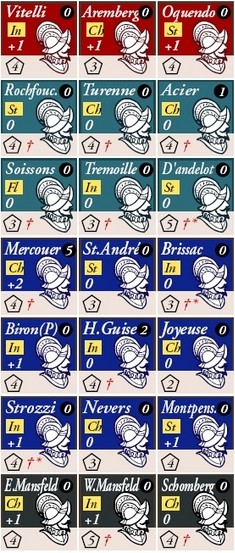
The First War of Religion
-Historical Background-
Both Humanism and the reformation came to France late, although it did come. Small humanist societies appeared, the most famous of which was at Meaux, headed by Lefevbre D'Etaples, and including such future luminaries as Guillaume Farel, Gérard Roussel, and John Calvin, and even the princess Margarete D'Angouleme, sister to king Francis the First. Famous authors of the French humanist movement included Gabriel Bude and Francois Rabelais, regarded as one of the giants of French literature. As the early decades of the century slipped away, more and more Frenchmen took up humanism. The court was full of them, as were the other courts of Europe. The Catholic Church in France more than tolerated them. There were humanist bishops and lesser clergy, and these exchanged letters with their counterparts even in the Roman Curia. Under Erasmus' direction, the movement had ultimately not split with the church; although they initial applauded Luther's reforms, when he broke with Rome a great many broke with him.

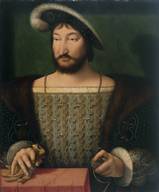
Guillaume Farel
Margarete
Francis
In France, the growing numbers of Lutherans were soon overtaken by the newer Reformed protestant movement, whose leaders included many Frenchmen. Most conspicuous among them the above mentioned John Calvin, who's "Institutes of the Christian Religion" and sermons went through numerous print runs and was passed from hand to hand throughout France. The official lay and church authorities, including the Sorbonne and the Parliament of Paris, demanded persecutions to maintain order and the status quo.
The King was unsure of what to do. On one hand were many humanist councillors, some of who were crypto-Protestants, advising moderation. On the other, he worried about relations with other Catholic powers. Complicating the situation more was the fact that Francis was allied to German Lutheran princes whom threatened to end their support for his war with the empire if he instituted persecutions. His ultimate decision to stay clear of burnings was most likely the result of the influence of his Protestant sister, whom he adored. There were few
executions.
This situation changed with the affair of the Placards, in 1534. Protestants placed huge signs on the walls and doors of many cities in France denouncing the mass. Francis, who had even imprisoned and banished reactionary Catholic theologians, was forced to act against what he saw as breakers of the peace, while political considerations also moved him in this direction.

John Calvin
Theodore Beza
Francis de Guise
The result was decades-long persecution, which actually lead to a growth in Protestantism. Many fled to Geneva and Basle, to learn and to train French pastors and missionaries, who then flooded back into France. At the time of his death, all of the blood that Francis had shed had not halted the growth of the Reformed faith. Henry the Second continued the persecutions with a vengeance, all to no avail. It had, however, turned Frenchmen against eachother in a way that had been almost totally avoided in Germany and Switzerland. The seeds of violence and revenge had been planted.
When Henry the Second died, he left a number of young sons in the charge of his wife, Catherine De Medici and a number of court favorites and Grandees. Francis the Second, a sickly and weak-minded young man, came to the throne inheriting not only the country, but also numerous factions; these included the Duke of Montmorency, Henry's favorite, and Constable of France. The Guise family, Lorrainers led by Henry, Duke of Guise, a war hero, yet unpopular as foreigners. St. Andre, Marshall of France, with his clients formed another party, and finally, the Bourbons. First princes of the blood, Antoine and Louis, Duke of Conde were Protestants. Their allies included the Chatillon brothers, Admiral Coligny and D'Andelot, and the rest of the Protestant nobility, whose numbers had grown substantially.
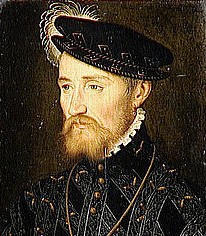
The Queen mother's position became impossibly difficult. Generally a moderate herself, she had gone so far as to allow here sons Protestant tutors and some speculate that the royal family was tainted with the Reformed faith. She now faced the conservative Catholic faction of Montmorency, St. Andre and the Guises, pitted against the Protestants represented by Conde and Coligny. Around this stage Antoine deserted to the Catholic side, but was trusted by no one. The Catholic party took control of the royal household and began to govern the country as they saw fit. This put off not only the increasingly persecuted Protestants, but also many moderate Catholics. Together a conspiracy was formed to rescue the royal family from the Guises, who had the strongest position, and restore control to the princes of the blood, now led by Conde.
The stage was set to kidnap the Royal family at Amboise on the Loire. The conspirators, composed almost exclusively of lesser nobles, were so careless of secrecy that their plans were known long before the event took place. Most were captured and executed before they could act. Conde was implicated and was scheduled for execution when King Francis suddenly died, and with him the Guise ascendancy (they had even married him off to Mary Stuart of Scotland, their niece.) Charles IX, a minor, succeeded him. Disaster was about to strike.
Protestants had been given a measure of toleration by Catherine. They could assembly for services but only outside of a town's walls. In the town of Vassy, a protestant assembly was taking place inside the walls of a town (a common occurrence where they formed a majority) in a barn near a Catholic church. The owner of the town was Henry de Guise, head of the Catholic faction. He was passing through when he heard this was taking place, and sent his retainers to investigate. What happened next has been the source of much speculation as to who started what.Hundreds of Protestants were killed and wounded by Guise's men, most likely at his instigation, while they themselves suffered little. It was rightly called the Massacre of Vassy, and it sparked the Wars of Religion.
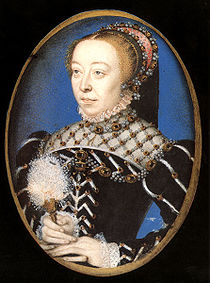
Catherine
Conde, and a reluctant Admiral Coligny raised the standard of revolt, catching the Catholics by surprised. The Protestants seized over one hundred towns either from the inside or after a short siege. Normandy, Orleanais, the south and Southwest were particularly fertile ground for their activities. The Protestants called in the English, while the Catholics called upon the Spanish. Both sides secured the services of mercenaries. The Catholic parties united in Paris under "The Triumvirs", Montmorency, Guise, and St. Andre, who made Antoine de Bourbon Commander in chief, calling all conservatives and Catholics to keep France from the heretics. The Protestants assembled in Orleans under Conde, demanding the freedom of the Royal family from the "evil councillors", and toleration of the Reformed faith.
Gaspard de Coligny

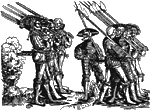
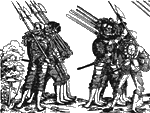
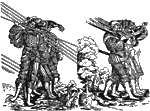
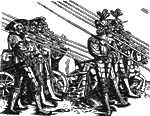


Scenario One: Dreux
Game Length
August IV, 1562 to April IV, 1563
Victory Conditions
Both sides wanted the war ended quickly, as resources were finite. The goal of each side is to force the other faction, and the people of France, into recognizing that they cannot be defeated militarily. The Catholic government must restore order and show no weakness. The Protestants must extort concessions on the issue of tolerance, including access to all offices and titles in France as well as freedom of worship. As important is to eliminate their political opponents, namely the leaders of the opposing factions.
Huguenots:
Major Victory-
The Triumvirs (French Catholic Commanders Guise, Montmorency, and St. Andre) are all killed or captured, and Huguenots control at least one city by April, 1563, or Paris is captured at any time.
Moderate Victory-
Control two cities by April, 1563.
Minor Victory-
Control One city by April, 1563.
Catholics:
Major Victory- Control All cities by April 1563, and Coligny and Conde are captured or killed.
Moderate Victory- Control all cities by April 1563, and either Coligny or Conde are captured or killed.
Minor Victory- Either control all cities, by April 1563, OR kill or capture Coligny and Conde
At Start
Possession of Territory
All towns on the board at start are controlled by the Catholics except the following:
Rouen, Pont De L'Arch, Romorantin, Sens, Blois, Bourges, Orleans, Meaux, Beaugency, Chatillon-Sur-Loire, Montargis, Sancerre, Nogent-Le-Retrou
Special Setup Rules:
1- Before forces are deployed on the board the Protestants can pick 5 minor towns to attempt to gain by treachery. Roll 1d6. On a 5-6 the town starts as Protestant controlled. Restrictions: Towns within two spaces of Paris (inclusive) and on the Paris-Chartres-Blois road (Boneval, Chateaudun, and Marchenoir) may not be attempted.
Headquarters and Off Board Supply
The Protestant headquarters is Orleans, with the OB Supply source being any road leading off the south board edge from Bourges or Amboise. For the Catholics, Paris is headquarters, with any road leading off the eastern board edge from Chateau-Theirry or Soissons the OB Supply source.
Forces at Start- Protestant:
[editors note: A single SP represents roughly 200 men. A TP is a treasury point]
Campaign Morale: 7
Rouen:
Montgomery, 8 TP
1x Huguenot Foot (12 SP)
1x English Levy Foot (6 SP)
1x Light Horse (2 SP Argolet)
1x Battery
Bourges:
4 SP Foot
Blois:
4 SP Foot
Pont De L'Arche:
2 SP Foot
Meaux:
2 SP Foot
Orleans:
Coligny (Generalissimo) [1], Conde [2], Genlis, Teligny, Rochefoucault, Soubise, 15 TP
2x Millers (5 SP each)
1x Lt Horse (4 SP- Argolet)
3x Huguenot Foot (2x 10 SP, 1x 6 SP)
2x Battery (one must remain in Orleans at all times)
Reinforcements- Protestant
Place in any Borough on any road on the eastern edge, south of Chateau-Thierry exclusive:
Roll 1d6 (secretly) starting Sept IV (continue each turn until arrival at the beginning of the turn):
On a 4-6
D'Andelot [3], 12 TP
1x Huguenot Foot (10 SP)
2x Landsknechts (10 SP each)
2x Reiters (6 SP)
Special Reinforcement- Rouen
If the Protestant main army enters Rouen, the following occurs:
Next turn 1x English Levy (10 SP) arrive in Rouen with 30 TP with Warwick leader. Rouen also becomes a source of Off Board supply for the Protestants. Note this only occurs once per game.
Forces at Start- Catholic:
Campaign Morale: 7
Blois:
A. Bourbon [4], Guise [2], Montmorency (Generalissimo) [1], Longueville, Damville, Martigues, 8 TP
1x Swiss reg't (16 SP)
2x Landsknechts (10 SP each)
1x Gendarmes (4 SP)
2x Legion (8 SP each)
2x C. League (8 SP each)
1x Lt Horse (4 SP Lancer)
1x Lt Horse (4 SP Argolet)
2x Battery
Paris:
St. Andre [3]/Monpensier, 6 TP
1x C. League (10 SP)
1x Gendarmes (2 SP)
3x Battery (One must remain in Paris at all times)
Paris Garrison- Special Rules
Militia (20 SP, no regiment. Must remain in Paris square)
Ponts De L'arche:
Aumale, 5 TP
1x C. League (9 SP)
Lt. Horse (1 SP, detached from Argolets above)
Compiegne:
2 SP Foot
1x Battery
Chartres:
2 SP Foot
Reinforcements- Catholic
At Compiegne or Soissons-
Roll 1d6 (secretly) starting Oct IV (continue each turn until arrival):
On a 4-6
(Random Leader), 15 TP
1x Spanish Foot (10 SP)
1x Swiss (8 SP)
1x Gendarmes [French] (2 SP)
Scenario Special Rules
1) On turn one, there is no attrition roll, and armies are considered paid.
2) The strength of fortifications is as follows:
Paris: Good
All other Cities: Average
All other Towns: Poor
3) Paris may not be summoned.
4) Pillaging: Any player that pillages more than five boroughs loses one level of victory.
5) While Rouen is in Protestant hands, Catholics receive only +1 supply points for
LoC to Paris.
6) Officer precedence is shown in the at start section above marker [#], the lower the number, the higher the precedence. If the highest ranked officer is killed or captured, the next highest Precedence officer takes over as Generalissimo. If all numbered officers are killed or captured, any leader may take over as Generalissimo.
7) Calling up provincial Levy
Both sides called up troops from the provinces to aid them. Unfortunately this weakened the defenses of those regions leading to their loss to local opponents. This rule will allow player to measure the risks and make their own choices.
Two regiments are available in each of the following areas:
Southwest (Even) [Appears on Southern board edge]
South (Pro-Protestant) [Appears on Southern board edge]
West (Pro-Protestant) [Appears on Western board edge]
Brittany (Pro-Catholic) [Appears on Western board edge]
Champagne/Picardy (Pro-Catholic) [Appears on Eastern board edge]
Either player may call up one or two regiments from any of these areas. A foot regiment (Huguenot Foot or Catholic League, 6 SPs) or Gendarmes/Millers (2 SPs) For each regiment called the area moves one control level in the other players favour. The levels are Even\Pro\Controlled. At the end of the game all even areas have no effect. Pro areas are rolled for (2d6)- if the pro player rolls a 10+ the area becomes controlled. If a player controls three of the areas then the victory conditions are shifted one level in his favour. Four areas means two shifts, and five brings automatic major victory.
When called up, start rolling 4 turns later at the beginning of each turn. On a 5-6 the regiment appears in the Action segment at any borough anywhere on that board edge with a treasury of 6TPs. Roll each turn until arrival. Draw a random leader for it.
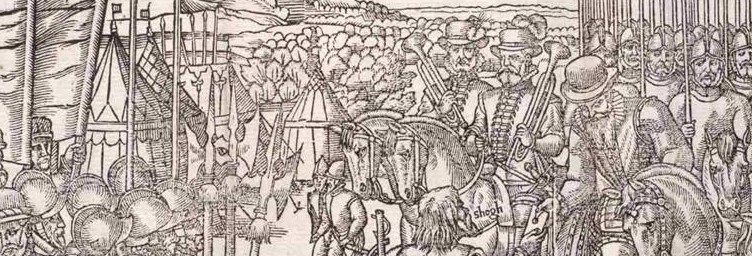
Pre-Game Setup
I'm back in the saddle as the Huguenots in our Captain's crew game of SF:Campaign! I had to pick five minor towns on the board to try to take by a coup (before play begins). Here's how it went:
Magny (Vexin): failed
Pontoise (Vexin): failed
Etampes (Isle de Fr.): failed
Milly (Gast): failed
Fontainbleu (Gast.): failed
So we're off to a good start........
Turn 1
We just finished turn one of the SF:Campaign! Dreux scenario. I play the Protestants- my opponent, the Catholics.
The Catholics went first, with Aumale summoning the small protestant garrison of Pont-de-L'Arche which surrendered, but being granted honours of war marched off to Rouen to join Montgomery and his joint Anglo-French army. Aumale then marched down to Vernon towards Paris, doubtless to join the army there.
[Play alternates with play choosing a force to act with, then to his opponent, and back]
Montgomery [Huguenots] took his army through the Vexin towards Paris, taking Gisors and Magny on the way, cementing his control of the province, and probably melting monastic statues down for bullets.
Sadly, the main Royal Army managed to force Blois to surrender, the garrison being lost....I really liked Blois, too..... They remained in the town, probably collecting funds.
Conde marched out of Orleans, the Protestant capitol, to Bonneval which surrendered tamely, cutting the Royal Army's Line of Communication with Paris and their heartland to the east, or so he thought. This done, he marched back to Orleans, where he and Coligny sat down for a drink and a quick read of Calvin's Institutes, snickering and feeling all smug.
The Paris army under St. Andre snuck out of the capitol and joined Aumale at Vernon! Looks like they're gunning for Montgomery. So he accidentally killed Henri II in a joust! Don't hate the player, hate the game! Seriously.
That was it for turn one. Don't worry. I'll win pretty soon.

Turns 2
Montgomery on the move! Cleaning up the Vexin is very important; its sort of a second headquarters to the Protestants. Without it, threatening Paris becomes problematic. I need it to be controlled, not neutral, so I sent the Count to remind the Catholics that the north is not secure. I also wanted to drag the main Catholic army away from my base in the south and get them to dance to my tune- what better way than to threaten Paris? I can't possibly hurt it, since I need to control the real estate around it which will take time. So I send Coligny and Conde with the main army up to Montlhery, which I didn't have the resources to take.
The northern Catholic army of Aumale doesn't seem to fancy its chances in the Vexin, and marches off to protect Chartres, which is a major supply hub for the Royalists. Meanwhile the main Catholic army decides to split up and clear some towns in the south. The army is so big that it can't hope to act vigourously even in friendly territory without the expenditure of treasure, so this move will enable it to better live off the land.

Turns 3
In a surprise move, the main Protestant army forces the bridge at Paris! This is an extremely risky move; it takes most of their resources for the turn (they are in unfriendly territory making supply very difficult) and a great expenditure of treasure. Why do this? Well, they are out of position. The Catholic main army is one move away. To march back to Orleans and safety would surrender the initiative. The real reason is to join Montgomery, head back to Rouen- scenario special rules mean that this will trigger English intervention. Lots of troops and 30 TPs, a king's ransom. They succeed, unchallenged by the Paris garrison, and march over to St-Denis and the waiting Montgomery.
This won't do for the Catholics! They rush their main army hot-foot to Chartres, and Aumale's army to Paris, expending their entire treasury to do it. Broke in the south, their army outside Beaugency treacherously storms and sacks the town! Infamy! They do make a little cash however, and skulk back to Blois...

Turns 4
The Royalists go first, rushing everything they have to Paris, eating dogs and cats along the way. Without further ceremony, the Huguenots fly off to Rouen, meeting the English under the Earl of Warwick, and of course all that lovely money!!!! Now what? The Protestants are bottled up and outnumbered in the Vexin, with the Catholics holding the cork. Or do they...?

Turns 5
The Protestants in Rouen have an ace to play- the Germans! They will be arriving anytime. If we wait in Rouen, they'll be ground up by the Catholics piecemeal. Diversion time! First, move my provincial reiforcements in from the south near Bourges. The Catholics go next moving THEIR reinforcements (westerners) into Chartres. Then we spring into action! My Orleans garrison descends on Blois, and summons it. They refuse, raising the Red flag (they will not surrender for the rest of the scenario). I decide to make a sudden assault on the town! If successful, I've sewn up the south. Instead, a terrible check, with hundreds of my men gunned down outside the walls. At least they know I mean business.
Instead, the canny (or jittery) Catholics smell a rat. They move their remaining southern troops to Paris. My plan backfires! There's nothing for it now. I move my main army to St. Denis again, and pray for the Germans to show next turn.

Turns 6
The Germans are a no show!!!! What do I pay these guys for!!!!?!?!? A confrontation seems inevitable. With an army of Reiters and Landsknects late in arriving, the Protestants couldn't wait around in front of Paris to have their hats blocked by twice their number so they retreated behind the Oise and on to Magny. The Catholics followed, storming Pontoise and raiding the Protestants into Magny!
We were all excited to play an Actions! engagement, but we realized that we didn't have enough figures for the 15 companies of Royal cavalry present...sniff....so we used the skirmish rules from the campaign. We did try out the Battle Generation system for fun and it worked perfectly! It now includes board generation using the cards from battlefinder! How cool is that?
Francois de Guise led eight companies of Gendarmes and seven of mixed Argolets and Light Lancers against Conde (in the Protestant Van) with five companies of Millers, six of English foot and four of Huguenot foot. Very evenly matched....sniff......we rolled and the Royalists got a very bloody nose, causing us to tone down the results table (we have been modifiying the rules as we went- some big changes coming up), but Guise passed his morale roll so the only real result was heavy losses in Royal horse. Hurrah!
In the south, revenge! The Protestants storm Blois! NOW who's laughing? I know, ME! What a great turn (except for the sleepy Germans- where are they?).

Turns 7
The tension is killing me! If I don't go first, the Royal army in the north will eat my lunch! Fortunately, I go first... but then luck is no longer important. I come up with a brilliant plan. With my treasury being so large, living off the land is for peasants! I can break stained glass windows with English shillings! I storm Mantes (a river crossing), garrison it, then march through the rabbit warren of Mantois, down to the main road and back to Orleans (over two turns). The now penniless Catholics can't follow... instead they lumber back to Paris, trying to raise funds their.

Turns 8
At last! My Landschneckts, Reiters and eastern Huguenots show up (only one month late). Arriving at Sens, they boldly march on to Orleans to make a junction with all the rest of the Protestant armies, saving some scattered garrisons, and the armies in Rouen and Blois. My
main army had brilliantly escaped disaster at the hands of the main Catholic army last turn. The now empty Royal coffers precluded pursuit. Now we're looking up the road to Paris...
The Royal army in the meantime settled down behind the Seine in Paris, hoping their Spanish and Swiss reinforcements arrive next turn.It looks like something big is about to happen....
Turn 9
This is it. With the Protestant army mustered in enormous numbers at Orleans and no sign of Spanish reinforcements for the royalists, something important had to be accomplished. The first thought was to march on Chartres and knock it out, opening the road to Rouen. This may have resulted in a siege depending on the garrison, which was unwanted at this time- Coligny's army has a good warchest that shouldn't be squandered in a side-show. We had to march on Paris.
Expecting the Royal army in Paris to be quaking behind their walls, the Huguenots marched to Montlhery to summon it as the last point on my supply line to the capitol. Then the unexpected- the Paris army crosses the Seine and intercepts us! Battle at Montlhery, and no small one, with both sides having over 70SP's, the Protestants with about 20% more men.
This will of course be resolved by a game of Spanish Fury, Battle on the 2nd of February.
A Catholic force has been mopping up town in the eastern part of Vexin, dropping it from Pro-Huguenot to neutral, which as Coligny I found "vexing". The one bright side was the Royalist sudden assault on Gisor cost them 800 men!
What will become of us?!!?!?!
Stay tuned, or ask Nostradamus!
The Battle of Montlhery
I'll give you a brief recounting of the battle so far. The Huguenots were intercepted by the Royalists in the Montlhery space adjacent to Paris. We decided to go by the book, or rather the rules, for campaign generated battles.
First thing we did was of course rule out the use of Actions! and go with Battle! since the forces involved were enormous. For scale, we kept with the 1SP = 150-250 men, and went with a 1:50 figure ratio. Even then I had to dip into my 30YW figs to bulk out my Huguenots, who weighed in at 100 horse and 280 foot (70 of which were 30YW figs).
Next we generated a scenario from the rules. The Catholic preponderance of light horse gave them the advantage but their Generalissimo (Montmorency) is not as sharp as my Generalissimo (Coligny). Rolling on the scenario table it ended up as the "In My Pocket" scenario, with the Huguenots having advantage of ground to go with their advantage in numbers. Unfortunately the terrain table generated a particularly flat and uninteresting board that gave no advantage to either side (from battlefinder, the O1 card, Fallsby plain).
We rolled to see if their were stragglers from either army and everyone showed up- no stragglers (the Catholics might have lost 30% of their army if they rolled badly, the Protestants 20%. These *might* have entered later).
Protestants set up first. With a huge advantage in Cavalry I put the Miller's brigade on my right (three units covered by Argolets) and the Reiters on my left (two huge blocks). From left to right I placed my Landsknechts and English, with three Huguenot foot units in reserve. Artillery was interspersed, with a large battery in the center. Conde led the Millers, Andelot and Genlis the Germans, Warwick the English and Rochfoucauld the French foot.
Catholics set up next as if they were ready to retreat. Way back on their board edge, cannon to the front, foot in a great horseshoe protecting the Gendarmes. The Swiss were in the center, Landsknechts and Catholic foot on their right, Legion on their left. Guise was not present (I think he's leading the force marching on Rouen), but the rest are present, Montponsier, St. Andre and D'Aumale backing up the Constable.
The battle began with the Huguenots unleashing the horse on both flanks, and then incrementally the German and English foot. Much cannonading by the Catholics disordered both advancing flank attacks but they are now in charge reach and pistol range. Much small arms fire has broken out, but almost no movement from the Catholics, now pinned at both ends of their horseshoe.
The Excitement!!!!
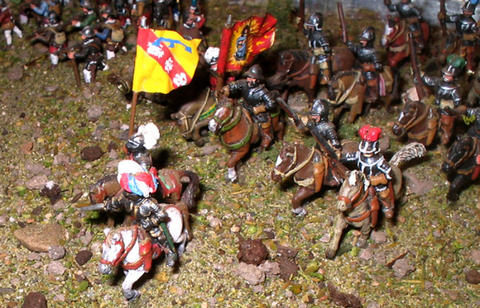
Part 2
The situation at the end of the last round was this: The Catholics, outnumbered 3 to 2 in strength, and more that 2 to 1 in cavalry, sheltered their few horse units between and behind their infantry units and artillery batteries (with which both sides were well served). In the center of this army stands a large unit (60 figs) of the fearsome Swiss, with Landsknechts and Catholic foot on the right, and a Legion and another catholic foot on the left. The Huguenots decided to send all their cavalry, 3 units of early millers and a petronel unit on their right, and 2 big units of Shwarzritters, backed up with a couple of infantry blocks on their left, to attack the flank units of the Catholic array. The Huguenots refused the center, which was wise as the large Catholic batteries would have broken up an attack against the nasty Swiss. A large portion of the Huguenot foot remained in reserve, in hope of preserving them for another day. Their formidable English allies were also held back in reserve, but kept ready as a reinforcement, if needed.
As the Huguenots approached, the Catholic guns that could bear knocked off a few figures here and there, and broke up their cohesion as normal. The Hug. Petronels effectively screened the Millers, while the Reiters moved up and Caracoled against the Catholic Landsknechts. The Germans on both sides began to ruin the cohesion of each other, but to little effect as both ended up recovering from their disarray at the same time, in preparation for the inevitable melee. At the end of the first session, both side ended with their flanks at near short range, with close combat a sure thing for the next few turns.
The game resumed after both sides studied the board to refresh their memories and recall the tactical situation.The Catholic player knew that his flanks were in jeopardy- his great hope was to damage the Huguenots, particularly their precious horse, and make them back off before they take too many casualties. As it was working out, it seemed likely that the Catholic flanks would collapse, leaving the rest of the army to encirclement and destruction. The Huguenots, meanwhile were somewhat confident of a good outcome, although they did notice that the forces currently engaged were at parity in numbers at least, if not quality.
The Catholic player felt that immediate action was needed; he had already detached a unit of Petronels from the reserve to add some more firepower on their right, but on the first turn, he changed the Switzers orders from reserve to assault, and sent them off at the double against the approaching Huguenot foot, which were supporting Reiters. The Millers, on the Huguenot right, deployed into columns (due to the constricted area), and a turn later, one declared a charge on the pristine Catholic Foot before them. The Reiters at the same time went for the Landsknects on their left. The poor Catholic foot had seen enough, and rolled very comfortably to rout off the board- with the Millers crashing into their rear. The only consolation for the Catholics is that the Millers will probably pursue the Catholics off the board, giving them one less unit to worry about- however, Catholic general St. Andre was carried along with them, albeit unhurt for now.
On the other flank, the Landsknechts fought manfully at even odds , but the Reiters still managed to break into their formation. Meanwhile, in the center, one of the two Catholic Gensdarmes units, up until now shielded in reserve behind the Swiss, gallops out through
the gap left by their friends' departure to face down the remaining Millers on their left. The turn ended with the Catholics rolling a "Cause for Alarm" test on their "Fortuna" levels and barely remainingat "Equipoised", while the Huguenots jumped up to "Resolute".
We did realize a couple of things with this session. Due to the depth of the Catholic setup, some of their units are quite near their board edge, giving them a secure rear that they shouldn't have. If we had a redo, the armies would have set up across the width of the board instead of the length. It would have still allowed for outflanking moves, without an artificial obstacle to the rear. Many Catholic forces may get an easy rout off the board because we didn't do this.
This wouldn't be much of a problem in a one-off game, but is vital in a game set in a campaign. The second realization is that SF:Battle! is in need of some editing, and a few more examples of play. We sort of expected this, and this current campaign game is a preliminary step towards revising the whole of the Spanish Fury system, in the hope that we can finally complete the entire set (along with the upcoming supplements- of which I should say no more).
Part 3
It's all over at Montlhery! Royal forces stream back to Paris in headlong flight, hotly pursued by Huguenot horse! The Catholic Duc de Montpensier taken prisoner! St.Andre rumoured killed, escapes uninjured, while Conde is wounded! All Royal guns fall into Protestant hands!
...when we last wrote, the battle was still in doubt. The Royalist left had a hole in it from the rout of the Catholic league foot, having been crushed by Huguenot Miller cavalry under Conde, who managed to get wounded. The Catholic brigade commander, "Van Boom" (the Royal player didn't have enough officers for every brigade, so a "neutral" was used). The rest of the Protestant cavalry now faced off against the advancing Gendarmes of the enemy reserve. The last foot regiment on the Catholic left was in a scrappy firefight with some Petronels, and would remain locked this way until night fell.
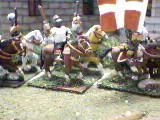
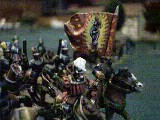
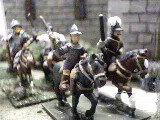
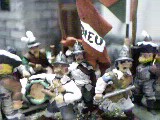
One the Royal right we left off with their Landsknechts in mortal combat with a column of Schwartzritters, while some Catholic foot and Petronels shot it out with another block of Reiters. Resistance ended suddenly when the Landsknechts folded in melee and were "escorted" to oblivion (off board) by their well mounted opponents.
This led to more than one "Cause for Alarum" for the Royal forces, with them sliding from Equipoised to Desperate, with the Protestants eventually moving up (due to "Causes for Rejoicing") to Resolute.
The Swiss in the centre had lurched forward to try and beat up the enemy's lower quality infantry, but couldn't catch the Protestant Landsknechts who had orders to draw them back nearer to the battery of heavies waiting for them. This they did, with the Swiss losing a good
number of figures to heavy fire while being unable to reach the retiring enemy.
Things went from bad to worse for the Royalists, as the Reiters savaged their last foot regiment on their right and chased it off, while the clash of heavy cavalry on their left ended with their Gendarmes routing before contact in one action and fighting to a standstill in another. Their confidence had dropped to hopeless with the Huguenots rising to Exultant. They were at the brink of disaster.
Two things saved them. The Huguenot horse was gone. They had routed their opponents off board and were unlikely to return from pursuit anytime soon. They had one small unit left without lances. Also, twilight gave way to darkness, enabling the Royalists to escape with
the remains of their army, including the undefeated Swiss.
Final result:
Catholic Losses- Out of 60SPs from the campaign who entered battle, only 29SP escaped, but all of it quality; Swiss and most of the Gendarmes. The French foot was all but annihilated.
Proestant losses- Out of 100SP they started with, One SP of Reiters and one of Landsknechts were lost, both to firepower, leaving a measly 98SPs of survivors..... Following the post battle proceedure some Catholic Gendarmes returned to the army which withdrew to Paris.
Decisive, but not decisive enough! Both Montmorency and St. Andre escaped (I thought he was killed at one point, but is was just that lousy mercenary Van Boom). Their best stuff got off with relatively few casualties. Big campaign morale loss for the Catholics (-3) with +3 for the Protestants.
The effect on the campaign? With such a huge mass of infantry lost, the besieging days of the Catholics are behind them unless they call up troops from the provinces, risking their loss. Worse still, the disparity in Heavy cavalry is even greater, this loss coupled with the Magny disaster meaning a lack of available Gendarmes for the Royalists makes open field battles difficult.
The Protestants have some problems too. Not enough territory around Paris has been secured to make a siege very safe- supplies will be few, desertion high. If the army breaks up to do the job, Catholic reinforcements on the way from Picardy will be able to link up with Guise in Vexin, making their infantry unstoppable (the reinforcements are composed of Spanish veterans and Swiss!).
Both sides are in a pickle! Now what?
Stay tuned..... more turns and maps to follow.

